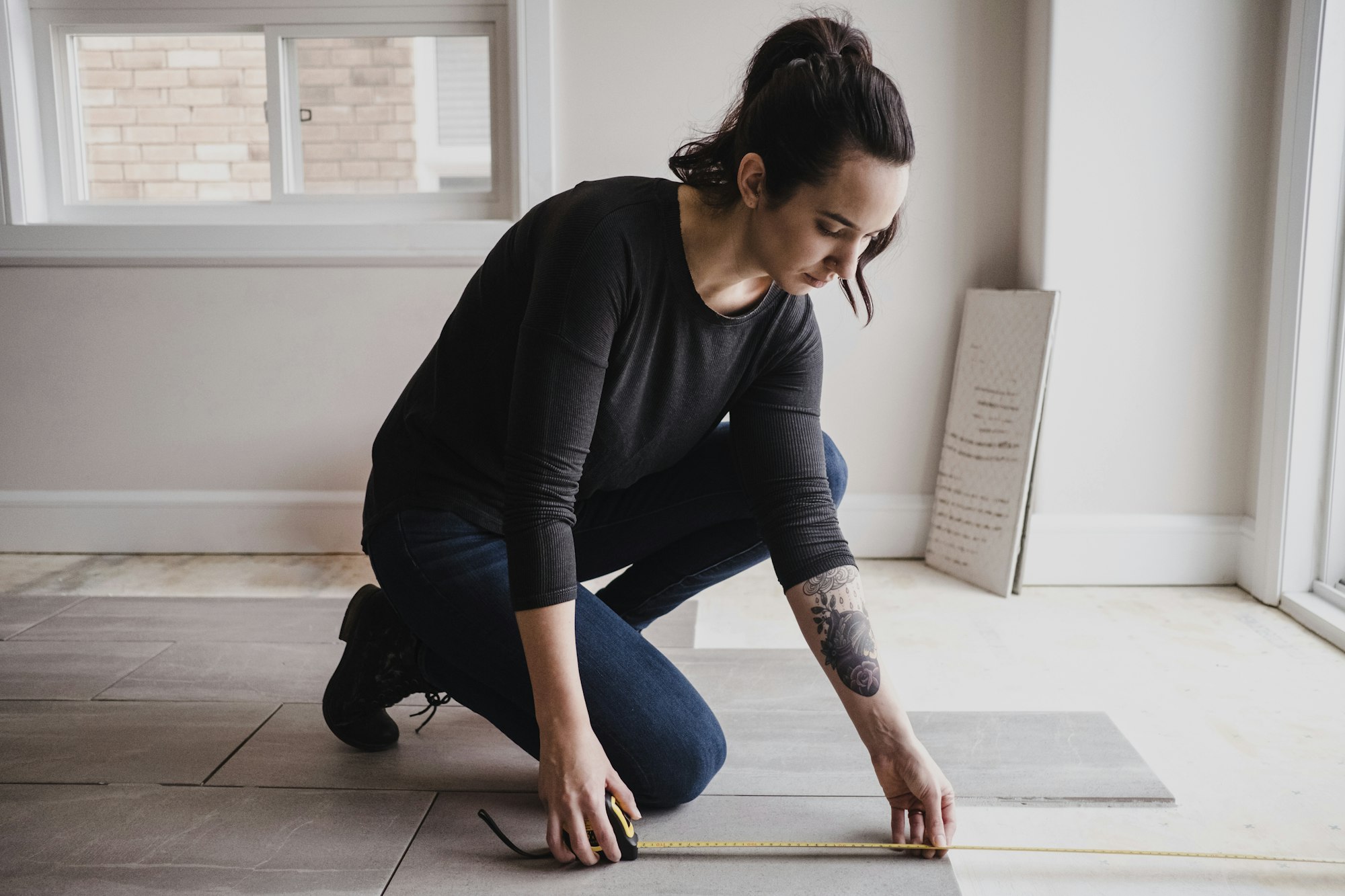
When it comes to transforming a room, few elements make a statement quite like large format tiles. These oversized tiles bring a sleek, modern aesthetic, enhancing any room’s visual appeal. However, their installation requires a precise approach and a bit of expertise. From careful handling and transportation to achieving perfect leveling, each step demands special attention.
For anyone planning to update a kitchen, bathroom, or any other space, it’s crucial to know how to overcome common installation challenges for a flawless result. Below, we’ll guide you through practical solutions to create a visually stunning and long-lasting large format tile installation.
Installing large format tiles presents unique hurdles. Their size and weight require extra support to avoid misalignment or breakage. Without a level surface and adequate handling, these tiles may not lay flat, resulting in uneven joints or potential cracks over time.

Another challenge is finding skilled installers. Not all installers specialize in large tiles, which need unique handling techniques to avoid mistakes that can affect durability and aesthetics. For small spaces like compact bathrooms, large tiles may feel overwhelming and require special cutting to fit awkward angles, which can increase the need for extra material and drive up costs.
Different materials also present distinct challenges: porcelain tiles, for instance, are dense and require extra care during cutting, while ceramic tiles are prone to chipping. Despite these challenges, large format tiles are popular for their streamlined look with fewer grout lines—an ideal choice for a modern, low-maintenance design.
A professional finish requires the right tools. Essential tools include an angle grinder with a diamond blade for precise cuts, suction cups for safe lifting, and a worktable that can support the weight of these larger tiles. Leveling clips are also critical to prevent lippage (uneven height between tiles), ensuring a smooth surface.
For cutting, wheel tile cutters or wet saws help achieve precise lines, especially for intricate angles. Finally, choose a high-quality adhesive mortar that supports large tiles, ensuring a strong, durable bond.

Perfect leveling is essential for large format tiles. Use a straightedge to check for unevenness on the floor or wall, and apply a self-leveling underlayment if needed. Plan your tile layout in advance to minimize cuts and avoid awkward edges. Dry-fitting tiles before installation allows for adjustments and ensures a seamless look.
To avoid lippage, use a leveling system that keeps each tile aligned as it sets. Tapping tiles gently with a rubber mallet helps eliminate gaps, ensuring each tile is flush for a polished finish.
Grouting is key to achieving a clean, professional look. Choose a grout color that complements your tile to create a cohesive design, and follow manufacturer guidelines on grout width for the best effect. Properly fill each joint, working in small sections to maintain even grout lines.
After applying grout, clean with a damp sponge, taking care not to remove grout from joints. Seal the grout in moisture-prone areas to protect against stains, ensuring your installation looks new for years.
Large format tiles require regular care to maintain their appeal. Sweep or vacuum to remove debris, then mop with a pH-neutral cleaner. Avoid harsh chemicals to protect the tile surface and grout.
For stubborn stains, a mild detergent with a soft cloth should do the trick, while grout sealant will add another layer of protection. For decor ideas that integrate tile, explore home styling tips for tiled spaces.
Large format tiles come with unique challenges due to their size and weight. They require precision in handling, specialized tools, and a perfectly level substrate. Ensuring a smooth, level surface before laying the tiles is critical to avoid irregularities and cracking.
Yes, installing large format tiles demands certain tools. You’ll need a leveling system, large tile cutters, and tile suction cups for safe handling. A high-quality thin-set mortar is also essential for a strong bond.
Lippage can be avoided by using a proper leveling system and continuously checking the tiles during installation. It’s essential to spread adhesive evenly and use clips and wedges designed to help keep the tiles aligned.
The necessity of sealing large format tiles depends on the material. Porcelain tiles generally do not require sealing, but natural stone tiles do. Regardless, sealing grout lines can help prevent staining and moisture penetration.
If a large format tile cracks, it’s important to address the underlying cause first, whether it be substrate movement or improper installation. Carefully remove the damaged tile and replace it, ensuring proper support and alignment.
Large format tiles can elevate the look of any space, but proper installation is crucial to achieving a durable and beautiful finish. By understanding the challenges—like securing the right tools, creating a level surface, and following best practices for grouting and maintenance—you’ll enjoy a seamless, high-quality installation.

If you’re ready to transform your space with large format tiles, contact DC Tile and Stone today for expert advice and installation services. With professional help, you can enjoy the beauty and durability of large format tiles for years to come.






